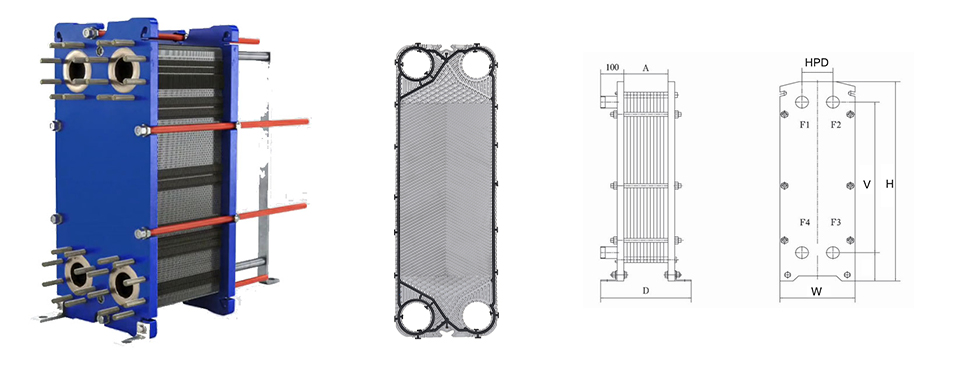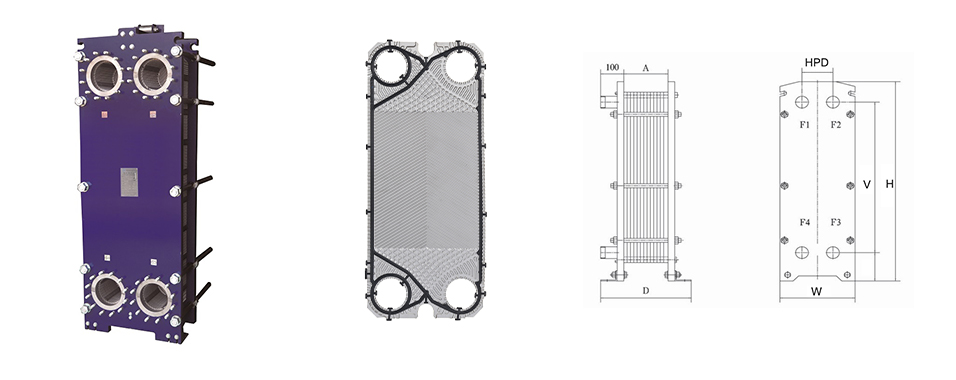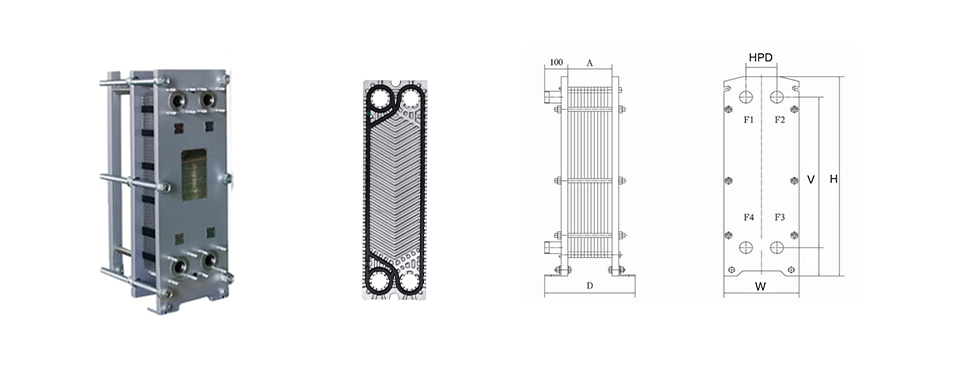Precautions for heat exchanger plate during commissioning
Because the heat exchanger plate works for a long time, the surface of the heat transfer plate will produce different degrees of dirt or deposits, thereby increasing the flow resistance and reducing the heat transfer performance. These are mainly the pressure difference between the inlet and outlet pressure gauges and the temperature of the cold medium outlet. Reduced, so we have to clean it, we need to debug the experiment after the cleaning is completed to ensure the normal use of the product, then what are the things we need to pay attention to during the debugging process?
1. Reserve a certain inspection site around the location of the flat plate heat exchanger.
2. Before installing the apv plate heat exchanger, clean the pipeline connected to it to prevent sand, oil, welding slag and other debris from entering the plate heat exchanger, causing obstruction of the flow channel or damage to the plate.
3. When the plate heat exchanger is stopped and stopped in sequence, first close the high-pressure side medium solenoid valve, and then close the low-pressure side medium solenoid valve. When starting up, first open the low-pressure side medium plunger valve, and then open the high-pressure side medium plunger valve slowly after the medium fills the plate heat exchanger channel.
4. Check all clamping bolts for looseness before putting into use. If necessary, tighten them. In recent years, plate heat exchangers have replaced traditional shell-and-tube heat exchangers in airports, hotels, commercial buildings, etc., and have achieved good results.
5. Maintenance and maintenance:
If there is a large amount of muddy sand or debris in the medium, the supporting decontaminator produced by Weike should be placed in front of the plate heat exchanger. The gasket heat exchanger has a low fouling coefficient, and the fluid violently rolls between the plates to form a turbulent flow. The excellent plate design avoids the existence of a dead zone, so that impurities are not easily deposited and blocked in the channel, and a good heat exchange effect is ensured.
The above is all the things we need to pay attention to during the debugging process after cleaning. We only know these things to ensure the product usage rate.
Weike is a manufacturer of environmentally friendly plate heat exchangers. We believe that the company's technical design capabilities, manufacturing capabilities, enterprise scale and after-sales service will win your trust.
1. Reserve a certain inspection site around the location of the flat plate heat exchanger.
2. Before installing the apv plate heat exchanger, clean the pipeline connected to it to prevent sand, oil, welding slag and other debris from entering the plate heat exchanger, causing obstruction of the flow channel or damage to the plate.
3. When the plate heat exchanger is stopped and stopped in sequence, first close the high-pressure side medium solenoid valve, and then close the low-pressure side medium solenoid valve. When starting up, first open the low-pressure side medium plunger valve, and then open the high-pressure side medium plunger valve slowly after the medium fills the plate heat exchanger channel.
4. Check all clamping bolts for looseness before putting into use. If necessary, tighten them. In recent years, plate heat exchangers have replaced traditional shell-and-tube heat exchangers in airports, hotels, commercial buildings, etc., and have achieved good results.
5. Maintenance and maintenance:
If there is a large amount of muddy sand or debris in the medium, the supporting decontaminator produced by Weike should be placed in front of the plate heat exchanger. The gasket heat exchanger has a low fouling coefficient, and the fluid violently rolls between the plates to form a turbulent flow. The excellent plate design avoids the existence of a dead zone, so that impurities are not easily deposited and blocked in the channel, and a good heat exchange effect is ensured.
The above is all the things we need to pay attention to during the debugging process after cleaning. We only know these things to ensure the product usage rate.
Weike is a manufacturer of environmentally friendly plate heat exchangers. We believe that the company's technical design capabilities, manufacturing capabilities, enterprise scale and after-sales service will win your trust.








